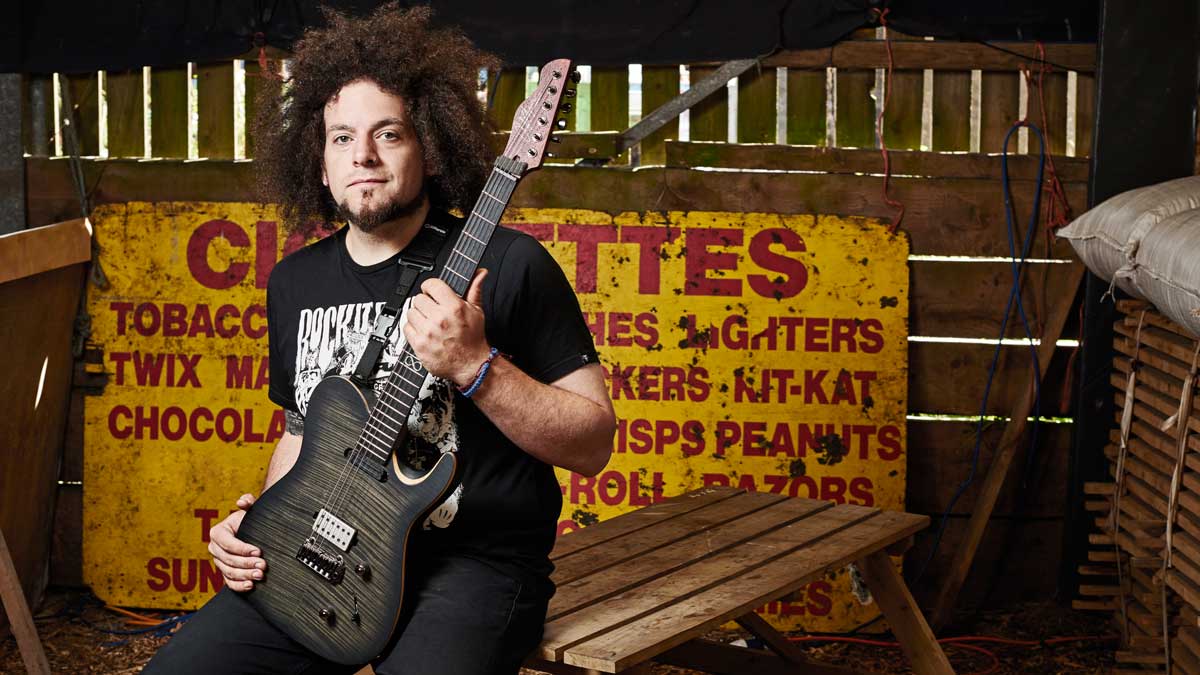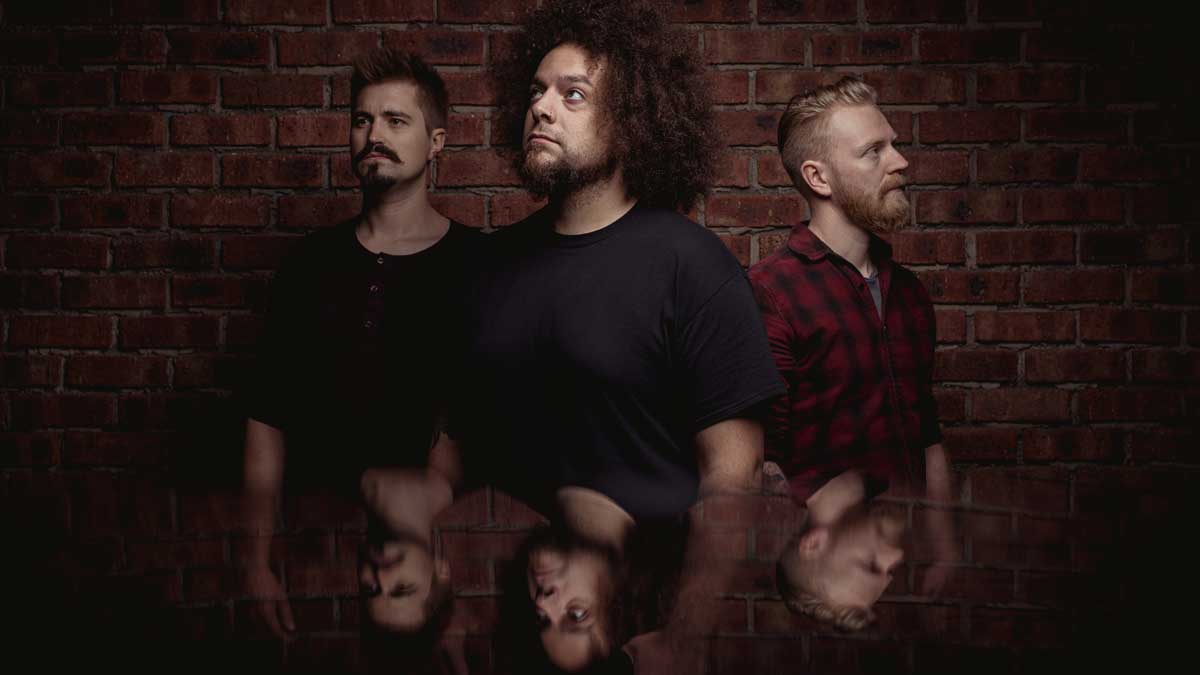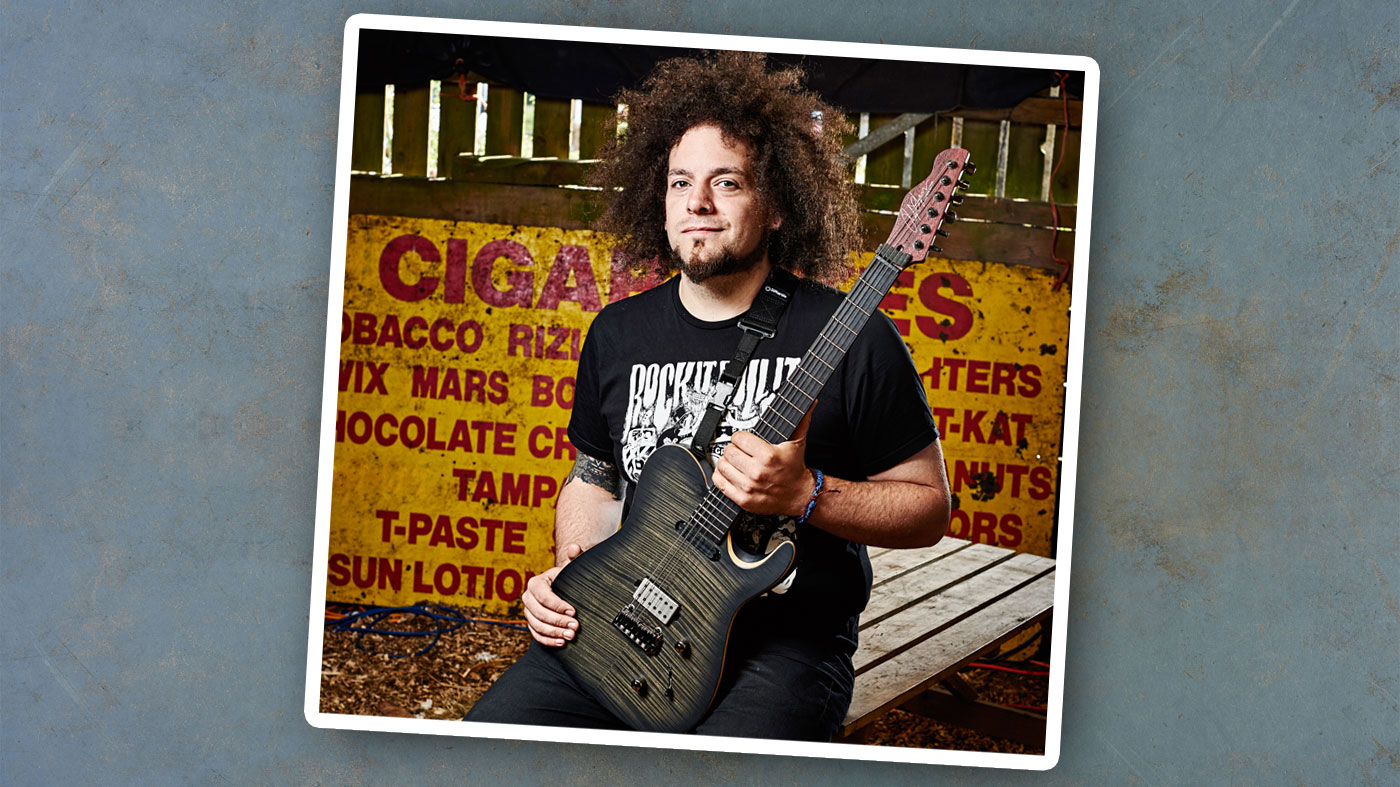Rabea Massaad’s top 5 tips for guitarists: "The more you listen to what you do, the better a guitar player you become"
Unlock your creativity with the YouTube star and Toska soundscaper’s advice

“People want to be entertained and they want to be informed… those are the two things you have to remember,” explains Toska guitarist Rabea Massaad, when asked for his guide to growing channels on the seemingly ever-fertile grounds of social media.
Perhaps best known for his work with YouTube funnyman Rob Chapman and playing in his band Dorje - whose rhythm section are shared by Toska - Massaad is a modern-day example of someone who has harnessed the power of the internet to reach audiences far and wide.
“And people want to be inspired,” he continues. “Those are the three things that I think if you can nail, it’s only a matter of time until you gain success. When it comes to having a YouTube channel, I wouldn’t class myself as any kind of expert. I’ve been incredibly fortunate in meeting Rob and lots of different people.
“If I had any advice it would be, you know, when you find the thing that you want to stick at - whether it be reviews or critiquing music or teaching - consistency and perseverance is what I would probably recommend most. It takes so long for YouTube channels to grow.”
By his own admission, far from being an overnight success, the Brighton-based musician’s social media reach came slowly but surely - and with Toska embarking on a small club tour this November, he’s gearing up for more hard graft. Like he said, it’s all about perseverance…
“I started in 2011, and only in the last two and a half years have I gained the subscriber base and view-count I have now,” he proudly admits.
“It’s all happened in the last 24 months or so. Most of that time was spent getting shit views and all that kinda stuff. You just have to keep going with it. I think it’s important to set the bar of quality as you mean to go on. If it’s starting with an iPhone, then that’s all right, you can always progress. If you go in with nice Canon gear, don’t go down from that. Stick at the quality you’ve gone in at because people really do pick up on that stuff.
Get the MusicRadar Newsletter
Want all the hottest music and gear news, reviews, deals, features and more, direct to your inbox? Sign up here.
“And it’s also about meeting people nowadays; it’s who you know. It’s way harder getting traction if you don’t know anybody. You’ve got to be a cool guy or girl and have a good attitude, networking with something to offer so people like you and want to work more with you.”
Kraken stuff
Before the guitarist offers his five tips for the readers of MusicRadar, he fills us in on exactly what we’re hearing on the nine tracks that make up Toska’s debut album Fire By The Silos.
Out this November via self-release, the guitarist says it’s the sound of him embracing his heavy side “down in drop A” as well as influences further afield. If you’re thinking Chapman Guitars and Victory Amps were involved, you’re definitely along the right lines...
“Obviously I have my Chapman models, which are great,” reveals Massaad, adding, “but when you record there are so many sounds and layers you want to capture, if you use the same stuff it becomes less three-dimensional. So I also used a 1978 Gibson Les Paul Custom, a Strat, a Tele, a Badcat, Mesa, KSR, Fender Twin… Then there’s all the cabinets, too!
“Each song I approached on its own, thinking about what would work. I always had The Kraken in there. Me and the producer decided it would be sensible to keep it running on one side, blended with a Diezel, or actually for most of the heavy tones, a KSR. Being my main go-to sound, The Kraken had to always be in there somewhere.”
As for ambiences heard on songs like Abomasum and When Genghis Wakes, it mainly came down to - well, as it so often does - spatial wizardry courtesy of Strymon effects.
“Generally, I use my Timeline and Big Sky - along with the Mobius modulation,” says Massaad. “Basically, we had a stereo rig all the time, so 90% ended up being the TimeLine and a Roland Space Echo. I swear by the Strymon stuff; they make my favourite delay and reverb pedals, which ended up all over the record.”
Here, Massaad reveals his five tips to guitar greatness…
1. Rhythm is the most important thing for any musician to grasp
“Everybody feels rhythm, which makes it fundamental when creating anything musical. If you want to talk about technique, Nuno Bettencourt is a huge influence. I immediately recognised how rhythmical he was. When I geeked out on him, it turned out he was a drummer before, and I was a drummer before guitar as well. Understanding time is very important.
When it comes to playing alternate-picking stuff, I try to stay really relaxed in the wrist so it’s almost floating above the strings. I find it’s a motion almost like whisking some eggs in a bowl
“I try to treat the right hand almost like a hi-hat. It’s the time-keeper. Even when it comes to playing alternate-picking stuff, I try to stay really relaxed in the wrist so it’s almost floating above the strings. Different techniques work for different people but I find it’s a motion almost like whisking some eggs in a bowl. It’s that repetition of a whipping kind of feeling. That’s how it feels when I’m picking, but with smaller movements.
“When it comes to strumming and funky stuff, the right hand becomes more of a snare with dynamics. You have the backbeat and then ghost notes, which can also come from left-hand muting and tapping. You also need to hit the strings in a different way, playing grooves off the higher strings to give it a feeling of rhythm and ghost notes. It’s almost like playing a drum track on guitar if you approach it the right way.
“There is no such thing as ‘easy’ in the Nuno back catalogue, but I would say start with Extreme’s Peacemaker Die verse riff because it’s not too hard, though all about that precision and ghost detail. Then if you want an absolute roast, go learn Cupid’s Dead. That’s the one!”
2. Chords are very important
“For guitar, getting a grasp of how chords and melody work together is equally important to rhythm. Creating a chord progression, and applying melody to that, either on top or within the progression, means your playing is able to provide musical context. It’s something I realised as I matured as a musician; as a teenage guitarist, all I wanted to do was shred over the music, instead of creating the music.
If I choose a simple root-note progression, I think about what other intervals can I add in to give it a different vibe, from major to minor and beyond
“So I probably realised this way too late, hashing out riffs and melodies without the understanding. Sometimes it’s worth having a bit of knowledge about chords and intervals. If I choose a simple root-note progression, I think about what other intervals can I add in to give it a different vibe, from major to minor and beyond. You want to find the right vibe and intervals to add some colour.
“Intervals are actually just notes from a scale. When you think about it, everything comes from a scale, and any note you play can come from a select number of scales. You don’t really need to know the theory; you just need to know what it sounds like. It’s all about connecting the melodic dots to the next chord.
“Mateus Asato is such a fine example of that: he’ll play a chord and then move through the scale using the same chord tones before hitting the next chord. It’s like, ‘How on Earth are you doing that so fluently?!’”
3. Have a good understanding of other instruments
“This is crucial if you want to write songs with a band. Knowing how bass, drums or keys interact with your parts is so useful in a writing situation; it makes collaborating with other musicians 10 times easier and makes your songs better. That knowledge could help you come up with stuff or approach your songs with that in mind - whether it’s at the forefront or subconsciously going in.
“You almost start visualising what the other instruments could do. You can help out your bandmates by doing that. It’s how it works in Toska: I’ll think to myself, ‘This kind of vibe on the bass, this on the drums.’ Immediately, the guys will know what vibe you’re going for when you tell them and you get through stuff quicker and in more detail because you are all on the same page.
“I’m not saying learn all those other instruments - I mean, go for it if you want - it’s just important to understand how they work when writing your own riffs. You might realise there’s way too much information on your part so you have to strip it back - and the more you consider other instruments, the less you’ll have to do that.”

4. Mimic other instruments as a soloist
“If you want to play or write technically, then aside from practising licks and techniques, study how other instruments phrase their licks and ‘shred’ or whatever. It’s a really interesting way of articulating your ideas and definitely helps to create a unique approach to your parts.
When you hear a sitar, there are certain micro-bends either down or up that you wouldn’t naturally think to do on guitar
“At some point, I remember working on [jazz standard] Take Five. I don’t know who played saxophone on the version I had, but I was trying to transcribe the lines onto guitar by ear. Had it been any other instrument or medium, whatever I wrote right after never would have happened. It came from me listening and then applying it to the fretboard, taking the articulation of the saxophone in the main melody.
“If I’m going to learn something, I try to make it sound just the same. I was really anal about trying to get the dynamics of the sax - it’s not just ‘hit strings and make sound’. It’s about airflow, which is completely different. I realised it was a cool way of trying to learn new stuff.
“Sitar is another big one for me, as well. My dad had one as well as this random compilation of Indian music with all sorts of stuff going on, and I remember thinking it was such a cool sound. You might not be able to sound like a sitar without the specific patch or that guitar Steve Vai used or whatever, but it boils down to articulation. When you hear a sitar, there are certain micro-bends either down or up that you wouldn’t naturally think to do on guitar.”
5. Listen to yourself and be inventive
“I think, ultimately, the more you listen to what you do, by yourself or with a band, the better a guitar player you become. For me, I’ve found it’s about being aware of everything you are doing. I try to always listen to myself and the other bandmates, and the song from a listener’s perspective, allowing me to form a better judgement of where something should go, or whether parts work or not.
“As an exercise, I might do things like take the rhythm from George Michael’s Faith and add a sextuplet at the end. What happens is you end up playing the same rhythm almost the wrong way round because of the direction of the picking.
“I’ve never considered anything I’ve done in terms of lead guitar playing to be unique in any kind of sense, but to warm up I might try to play a melody all in bends - it feels really weird but it’s great for building precision and inventing new phrases. I might connect the pentatonic scale on the B and E strings, sliding up and down as a continuous loop.
“Things like that are a great way of learning and creating at the same time. It’s a bit like a drop-down box on a computer… you get to one position and soon realise there are loads of new options around whatever you are playing!”
Fire By The Silos is out on 2 November.
Amit has been writing for titles like Total Guitar, MusicRadar and Guitar World for over a decade and counts Richie Kotzen, Guthrie Govan and Jeff Beck among his primary influences. He's interviewed everyone from Ozzy Osbourne and Lemmy to Slash and Jimmy Page, and once even traded solos with a member of Slayer on a track released internationally. As a session guitarist, he's played alongside members of Judas Priest and Uriah Heep in London ensemble Metalworks, as well as handling lead guitars for legends like Glen Matlock (Sex Pistols, The Faces) and Stu Hamm (Steve Vai, Joe Satriani, G3).











